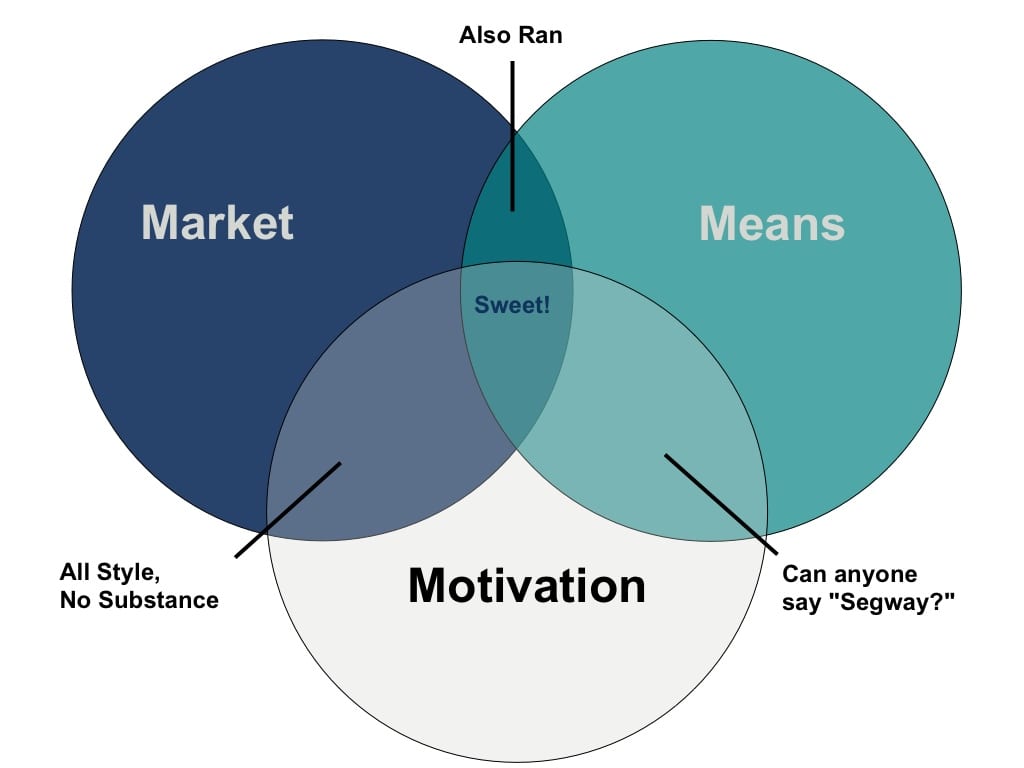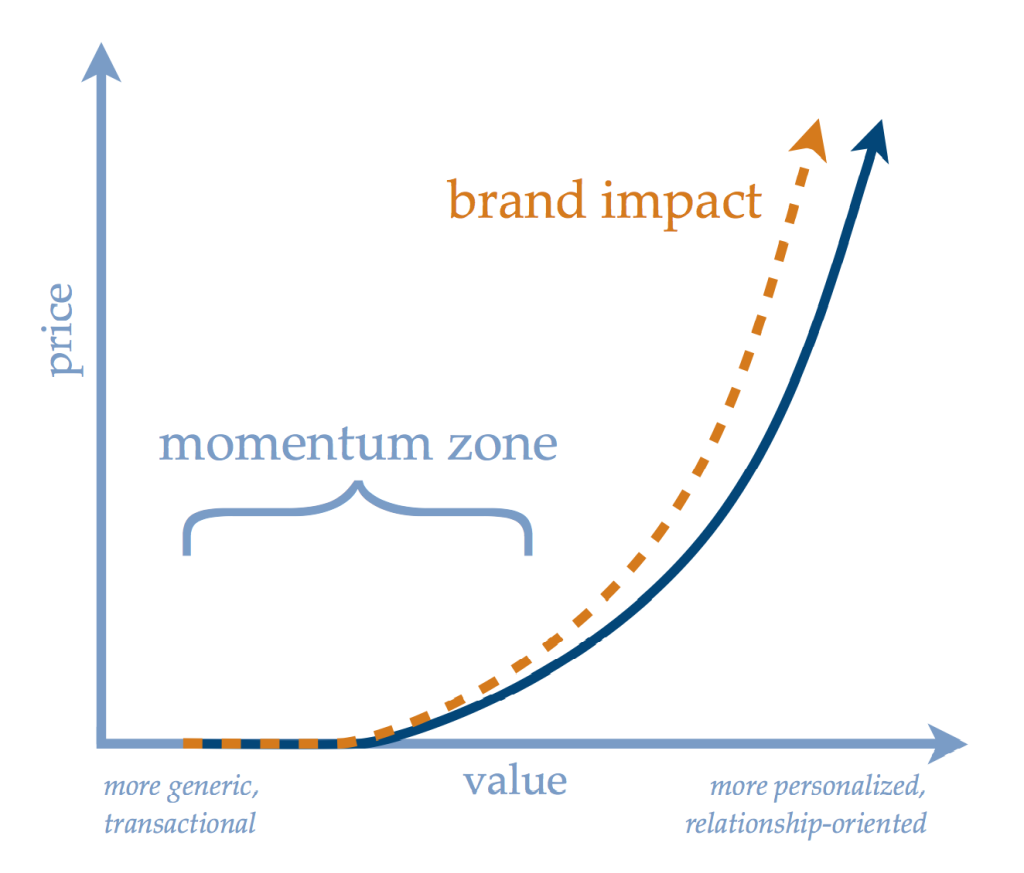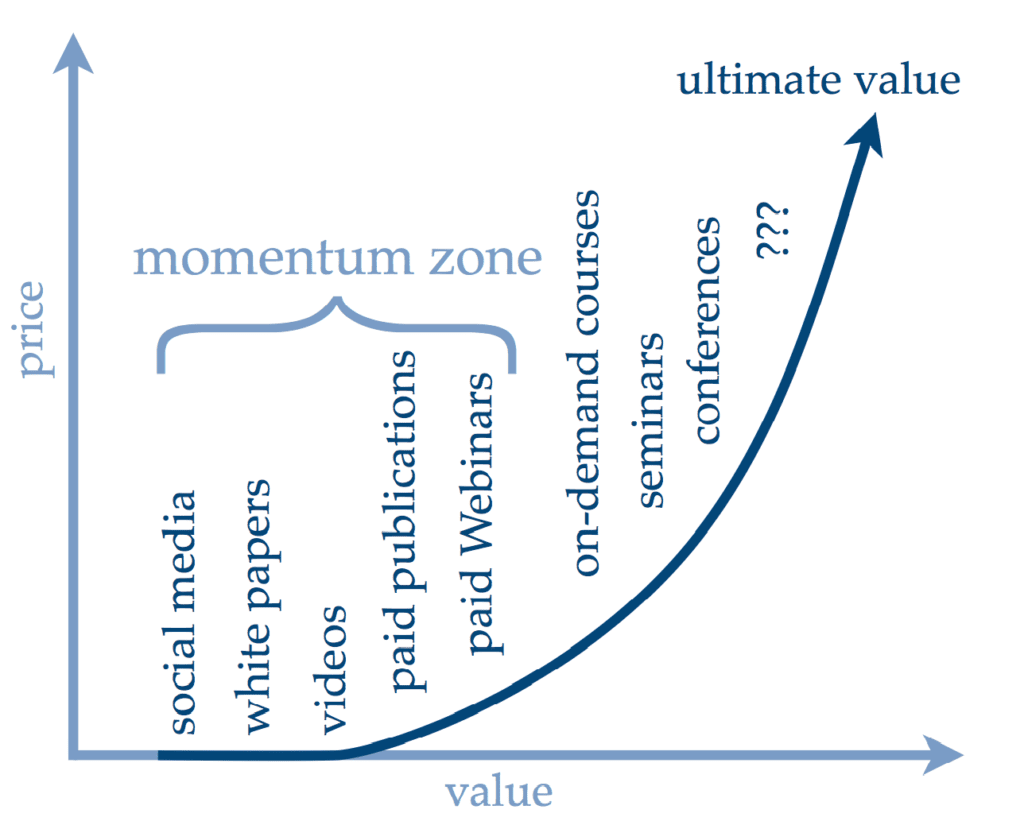
Do a quick search phrases like “launch online product,” successful product launch,” or “product launch formula” and you will see that a lot of people – perhaps even you – seem to be looking for insight into how to get a new product off the ground successfully. And there are plenty of self-appointed “gurus” out there happy to take your money in exchange for their “formula.”
Of course, if your goal, like the goal of most readers here, is to sell online courses and other educational products, then there is no denying that having a sure fire product launch formula would be incredibly valuable. What may not be so valuable is forking over hundreds or even thousands of dollars – and usually quite a bit of time – to get access to some guru’s secret formula.
Why? Because there is no secret formula.
Yes, there are always new tools and techniques you can pick up to improve how you build and launch a product, but the fundamentals of a successful launch are well established at this point. If you don’t have them in place, fancy tools and techniques are practically worthless.
So what are the fundamentals of a successful product launch formula? Here they are – no credit card required:
- Connect market, motivation, and means
- Build a value ramp
- Take – and borrow – names
- Learn, adjust, and keep on launching
1. Connect market, means, and motivation
In a nutshell, there has to be demand for the product you plan to sell, you have to have the capabilities necessary for creating and delivering it, and for real success, you have to truly believe you will create significant value through making the product available.
These may seem like big issues to tackle, but there is no getting around them if you want to successfully launch a product and build a business. Fortunately, there are also good, “no guru required” approaches to addressing them.
Market
Not surprisingly, the best way to be sure that there is demand for a product is to focus on a market you already know reasonably well and begin offering content into that market that aligns with the product you plan to create – things like blog posts, brief videos, or white papers. Do people respond? How strong is the response, and what can you learn from it to make your product more successful? There’s a reason for the old saying “Nothing ventured, nothing gained.” You have to stick your neck out a bit, and these days, doing that in cost effective ways is easier than ever.
Whether or not you know the market well, there are plenty of ways to get evidence that people people are actually looking for the kinds of solutions you can offer. To gather that evidence, use the approaches I discuss in detail in 15 Ways to Validate Your Online Course Idea. Otherwise, your product launch will be a shot in the dark.
Means
Are you actually capable of creating the product you need to win your market? Creating and selling courses is exponentially easier than it used to be. I list a range of platform options in 15 Platforms to Publish and Sell Online Courses and I’ve curated a valuable set of tools in my free Learning Revolutionary’s Toolbox. You have all of these at your disposal.
If you still feel like creating a great product is beyond your capabilities, reasonably priced help is now easier to get than ever on sites like Upwork, 99Designs, Fiverr and a range of others that I also cover in the The Learning Revolutionary’s Toolbox.
Motivation
In many ways, motivation is the both the toughest to tackle and the most important out of these three. It’s a persistent problem with many of my organizational clients: the people in charge of creating and delivering educational products really have no significant interest in or passion for the topics the cover, and worse, they don’t really seem to have a sense of how the products can change lives for the better. In a word, they lack vision.
This tends to be less of a problem with solo subject matter entrepreneurs. These people – and you may be one of them – tend to do what they do because they are intrinsically motivated. This motivation is incredibly important when it comes to pushing through the tough spots, being bold with your pricing as well as outreach to customers and partners, and in general, doing the work that make a product launch successful.
If you feel like you don’t understand your own motivations well, its worth using tools like StrengthsFinder, the Kolbe A Index, or the Fascination Advantage Assessment. Take any of these tools with a grain of salt: there is no such thing as a questionnaire that can reveal all of the secrets of what makes you tick. Even so, just the process of going through these kinds of assessments can help you focus your thinking and really home in on the vision for your product.
2. Build a value ramp
If you want to successfully launch a product – even to a relatively small audience, much less a large one – you have to start proving you have significant value to offer well before you try to sell anything.
This is hardly a new idea these days. I discuss the importance of value throughout Leading the Learning Revolution and emphasize that the opportunities for creating and delivering value these days are huge. From blogging, to videos, to Webinars, to podcasts, you have a wealth of tools and channels at your disposal. It’s easy to debate at infinitum which ones are best for what. My advice is to pick one or two and get really good at them.
Your goal, even when you have only a single product to sell, is to build what I call a “value ramp.”
By starting at the bottom left of the ramp with free or very low cost offerings – like blog posts, brief videos, or white papers – you build momentum that will send prospects up the ramp to higher priced, higher value offerings. A successful launch, whether of your first or your fiftieth product, is all about building momentum – and you do that by constantly providing value.
And the thing about a Value Ramp is that it is not just about a single product, it’s about building a high value business, the kind that creates more and more value over the long term. Launches are nice, but longevity is where it’s at.
3. Take – and borrow – names
Even with all the flack that e-mail takes these days, successful Internet marketers know it is still by far the best way to ensure that you actually connect with a prospective buyer when the time comes to launch a product. One of the most important outcomes of everything discussed under #1 and #2 above is to build a database of e-mail addresses willingly given to you by people interested in the kind of value you have to offer.
This list is gold. It is the backbone of any significant Internet business, including a business focused on selling online courses and other educational products. The larger and higher quality your e-mail list at the time you launch a product, the more successful the product. If there is, in fact, a product launch formula, this is it:
NE x QE = LS
(Number of E-mail Addresses x Quality of E-mail Addresses = Level of Success)
There is plenty of of good advice out there on how top build your e-mail list. See, for example:
And check out Build An Audience – What I Did (and You Can, Too)
Also, as you might expect, list building is something I discuss at some length in Leading the Learning Revolution. The bottom line, though, is that you have to offer the kind of value discussed in #2 and – for at least some of that value – ask people to hand over their e-mail information. Many, of course, won’t, even if you are offering great value, but the ones that do are invaluable not just for a specific product launch, but for the ongoing growth and success of your education business (see #4 below).
If you don’t yet have a great list – or even if you do – but feel you need to move ahead with a launch, another important component of success is to leverage the lists of others. As part of creating and sharing value, you should dedicate time to reaching out actively to other experts and entrepreneurs in your target market. You will find that many of these people, even ones that seem like competitors, are eager to offer new sources of value out to their own lists.
One thing to remember about list building, though: whether you are talking about your own list or leveraging the lists of others, it takes time. Time to build relationships. Time to collect a significant number of names. Many of the “product launch formula” type programs out there tend to gloss over this fact and set expectations that, in the end, can seriously damage your motivation (see #1 above). Keep at it, and keep creating value along the way.
4. Learn, adjust, and keep on launching
A lot of the product launch formula-type advice out there is overly focused on a single big launch – basically, the “one and done” approach. It’s rarely the case, though, that you fully capitalize on a product in one single push. (That’s why, for example, you see the “gurus” continually coming back with a new round of the same product.)
You may need to make several pushes around the initial release of a product, and of course, if you plan to be in business for the long haul, you want to be able to introduce new and improved versions of your product that can be sold to your established customer base.
The key to maximizing a products potential in the market and to continuing to produce revenue from it over time is to actively solicit feedback from customers, learn from that feedback, and take action to make the product better. Feedback may also lead to complementary product and service offerings or entirely new products altogether.
One key reason to use some form of learning management system, or LMS, in delivering your educational content is that it can give you insight into how – and whether – people use the products they purchase from you. Do they complete the the lessons or course you offer? How much time do they spend before abandoning them? Do some parts of the content get accessed more than others? A decent LMS will give you this kind of data. (For a list of LMS possibilities see 15 Platforms to Publish and Sell Online Courses.)
And an LMS can also make it easy to communicate with your learners in a variety of ways, whether through discussion boards, e-mail features, or surveys. To find out what’s most valuable about your products, the most direct way is to simply ask!
No Guru Required
So, there you have it: the four components of a successful product launch formula.
- Connect market, motivation, and means
- Build a value ramp
- Take – and borrow – names
- Learn, adjust, and keep on launching
Sign up for any of the many online programs that promise to make you an Internet product success and I guarantee you will get some variation on those four areas. That’s not to say that there aren’t programs out there that are of value, but they don’t offer any magic bullets. And I know from my own experience that spending time and money on those programs usually just distracts you from doing the work you’ll have to do to address these four areas.
My bottom line advice for anyone who wants to grow a successful education business is: you’ve got the product launch formula – time to get to work.
Jeff
Table of Contents



Related Posts
Your Ultimate Guide to Pricing a Masterclass
LearnDash Review| A Powerful LMS Plugin for WordPress
10 Key Elements of Successful Membership Sites